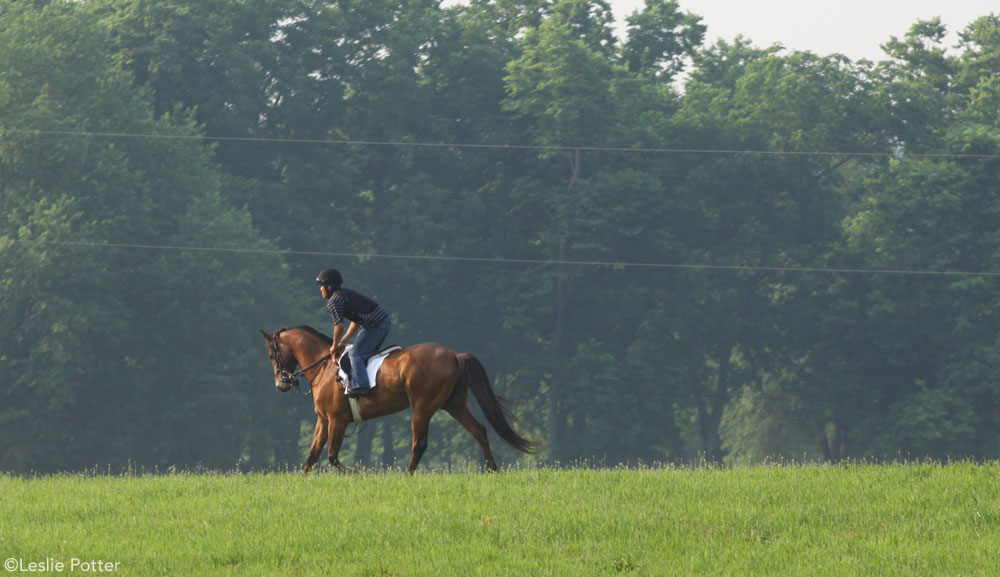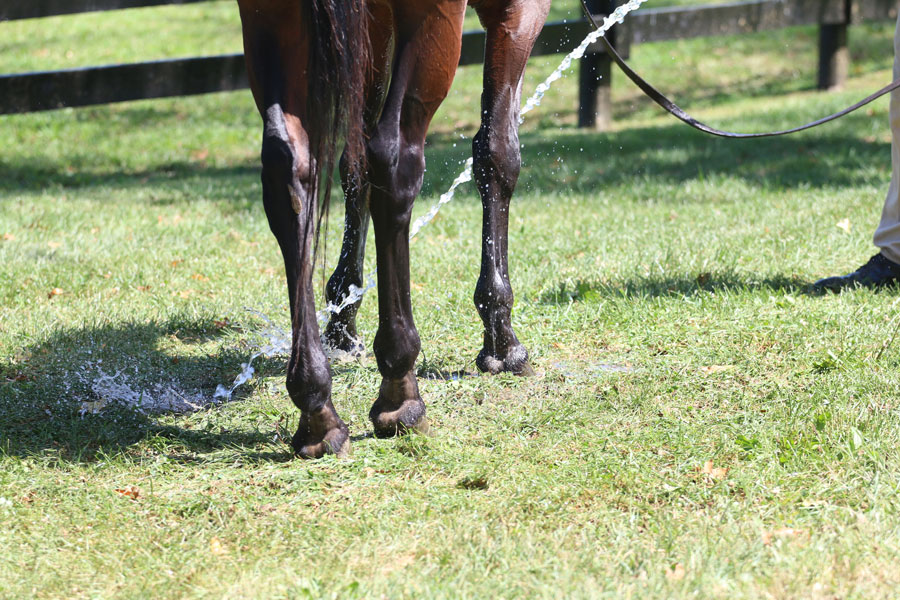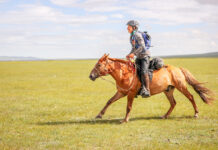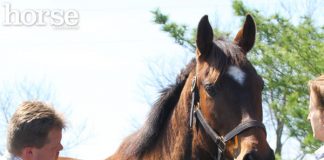
You’ve been working hard on getting your horse into peak condition for the competitive season and have been taking him to multiple competitions. In the early part of the summer, everything was going fine, but now you’re noticing that he isn’t putting out as much effort as usual under saddle and seems irritable and less cooperative. He doesn’t seem as interested in food or in goings-on in his surroundings. These are all signs of overtraining.
Signs of Fatigue
The key difference is that a horse that is overreached recovers within days or, at most, a two-week period when given time to rest. In contrast, the horse that is chronically overtrained in high-intensity exercise like racing is one that may not recover for months or even years due to extreme stresses on his physiology; in some cases, the consequences may be career ending.
What possible signs might tip you off to a fatigue problem? You might notice:
- Decreased performance or lack of improvement in performance despite on-going training.
- Decreased body weight by as much as 10 percent. Body weight reductions have more to do with diminished muscle glycogen stores rather than reduced feed consumption.
- Elevated heart rate during exercise. This is detected using a heart rate monitor.
- Delayed heart rate recovery, i.e. the time to return toward resting heart rate following exercise.
- Behavioral changes: head tossing, tail wringing, unwillingness to perform tasks, irritability, grumpy or nervous behavior.
- Less interest in interacting with other horses, including introduction of a new herd member.
These changes can also be characteristic of many other issues. It’s essential to have a thorough physical exam and lab workup done on a horse demonstrating poor performance in order to rule out an underlying disease or injury. If nothing is found, then a diagnosis of chronic fatigue may be suggested.
Another significant finding is that these horses have no difference in frequency or severity of gastric ulcers compared to horses that are not suffering from training fatigue.
However, a horse experiencing gastric ulcers or musculoskeletal pain has stress plus a demanding work schedule, which then can bring on overtraining effects.
What to Do
As soon as there is recognition that a horse is suffering from fatigue, the first step is to provide plenty of rest for a sufficient time.
The second effective strategy is to examine possible stressors in a horse’s life and remove as many as possible. If turnout is not available, then the horse should be rested in as large a paddock as possible and hand-walked at least twice a day.
But it’s far better to prevent the problem in the first place.
Stress in a horse’s life amplifies the effects of training, especially when he performs high-intensity work. You may not always initially consider the normal ebb and flow of a competitive horse’s life as stressful; it’s easy to take things for granted as long as you see your horse eating and alert.
Hidden Stress
Think about what it might be like for a horse to experience a monotonous training routine, day after day, with no variation from riding in circles or repeatedly practicing skill sets. How does a horse respond to being stabled with incompatible neighbors or dealing with difficult herd dynamics in pasture?
Or, consider a horse living only in confinement without the ability to play in a pasture. What about feeding schedules that provide food just twice a day with nothing to forage on in between? What about the campaigner that is trailered to and from lessons, clinics, and competitions, with all the stresses inherent in transport, in addition to ever-changing routines?
All these situations contribute to a horse’s anxiety and emotional stress. There may also be a low-level disease at play, like inflammatory airway disease, viral respiratory infection, or ulcers, any of which impact a horse’s steady state.
Another big issue that creates overreaching or overtraining occurs when a horse is faced with too much work or intensity of work without the appropriate amount of background conditioning or training.
These horses are over-faced; this particularly happens to young horses that start with plenty of ambition. A rider might try to capitalize on this energy and enthusiasm, but ends up asking too much over prolonged periods of weeks and months.
Train for the Job
While young horses may be more at risk of fatigue, any age horse can experience being asked too much time after time. Ongoing training demands coupled with a busy travel and competitive season creates progressive fatigue. Trauma and inflammation within tissues may result in soreness and pain that affects how well a horse responds to workouts.
Ideally, a horse is trained systematically with progressively increasing demands, first in duration and then in intensity. More intensive training periods are best coupled with alternate days of light work and/or turnout. Before more training loads are asked of the horse, his tissues need time to respond and recover; avoid repeating strenuous efforts on consecutive days.

Post-Workout Care
After every workout, examine your horse for leg swelling or lameness, and monitor resting heart rate, rectal temperature, appetite, attitude and general demeanor. Ice boots (or cold water hosing) help limit inflammation in the lower legs when applied for 30 to 40 minutes after a strenuous work effort.
Following cold therapy, bandaging the legs, with or without poultice, may be useful for horses that tend to develop windpuffs. If leg swelling does develop, then it is likely that the horse is being asked too much for his level of fitness and structural strength.
Tapering down the training effort—a steady reduction in training intensity but not necessarily a change in training volume—for a few weeks prior to competition is an additional important strategy to bring a horse to peak physical and mental state on competition day.
With careful planning at the start of the season, you can keep your horse mentally sharp and in peak fitness without overdoing the physical demands on his body.
NANCY S. LOVING, DVM, is a performance horse veterinarian based in Boulder, Colo., and is the author of All Horse Systems Go.
This article originally appeared in the August 2017 issue of Horse Illustrated magazine. Click here to subscribe!






[…] Dangers of Overtraining – Horse Illustrated […]